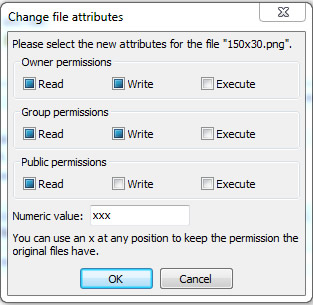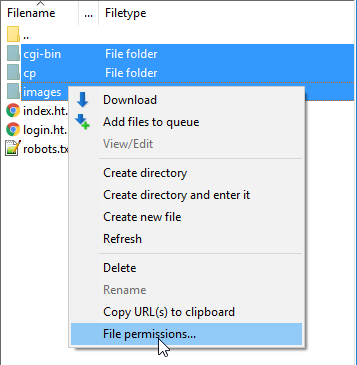

) However, if you make use of mod_rewrite s or other. ( Sometimes though, numerous ftp accounts may be used to manage an installation, and if all ftp users are known and trusted, meaning not shared hosts, it may be okay to assign group writable. In most instances, all essential WordPress files should only be writable by your user account (or the httpd account, if it’s different). To start with, this file is created with 644 permissions, but it isn’t safe to leave it like that. Some files and directories should be “hardened” with more strict permissions, in particular, the wp-config.php file. If you installed WordPress yourself, you probably WILL need to change WordPress file permissions permissions. It’s best not to alter his unless you’re having problems with permission errors, or you know what you’re doing. You probably won’t need to be changing file permissions if someone with experience installed WordPress for you. The file and folder permissions for WordPress will probably be the same for most users, depending on how you installed it and the umask settings of your system environment at the time of installation. If that’s the case, it would mean permissions are set more permissively than default (for example, 775 rather than 755 for folders, and 664 instead of 644). If WordPress is running as the FTP account, that account must have write access, meaning it must be the owner of the files, or be in a group that has write access. On shared hosts, files shouldn’t ever be owned by the webserver process itself (sometimes this is For instance, you might have a user account that lets you send files to your server via FTP, but the server itself may run under a separate user, in a separate usergroup, like dhapache or nobody. Usually, all files should be owned by your user (ftp) account on your web server and should be writable by that account. This guide is relevant to servers that run a standard setup (note, for shared hosting using “suexec” methods, see below). This is the "temporary" directory permission and should also be avoided unless you really know what you're doing.WordPress file permissions will vary between hosts, so we can only outline general principles here and can’t cover all scenarios. It means that anyone can create a file in the directory, but only the owner is allowed to remove the file, regardless of permissions set. The t flag is basically the same thing as the s flag for a user or group, but is used when applied to all others. This is not usually a good idea, so don't do it unless you really know what you're doing. If set on the owners read permission, it sets the setuid bit.This can be helpful if you want all files in that directory to be created/owned by that owner group. This means that any user who changes into that directory suddenly performs all actions as if the owners group was their default group. If set on the group read permission, it sets the setgid bit.This indicates the setuid/setgid permission.

The 's' flagĪn s can be added to the owner or group 'read' permission. Special permissions can be added which allow you the special ability to automatically change users or group, or to specify a directory as a "temporary" directory.
FILE PERMISSIONS RESET IN FILEZILLA FULL
Thus, all three must now be added together to get the full value. Remember, there are three sets of owners of a file or directory:Īll three have their own permissions. The following table illustrates the different permissions each owner could possibly have. Then, you would add all three together for each owner to get the full value. For example: 4 = r (read) 2 = w (write) 1 = x (execute) Using the numeric mode, you can assign numbers to each permission. Numeric Mode is easier to understand as you just need to add up the values. There are two ways to set permissions using chmod. If you're logged into your server via SSH, you can change permissions by running the chmod command.


 0 kommentar(er)
0 kommentar(er)
